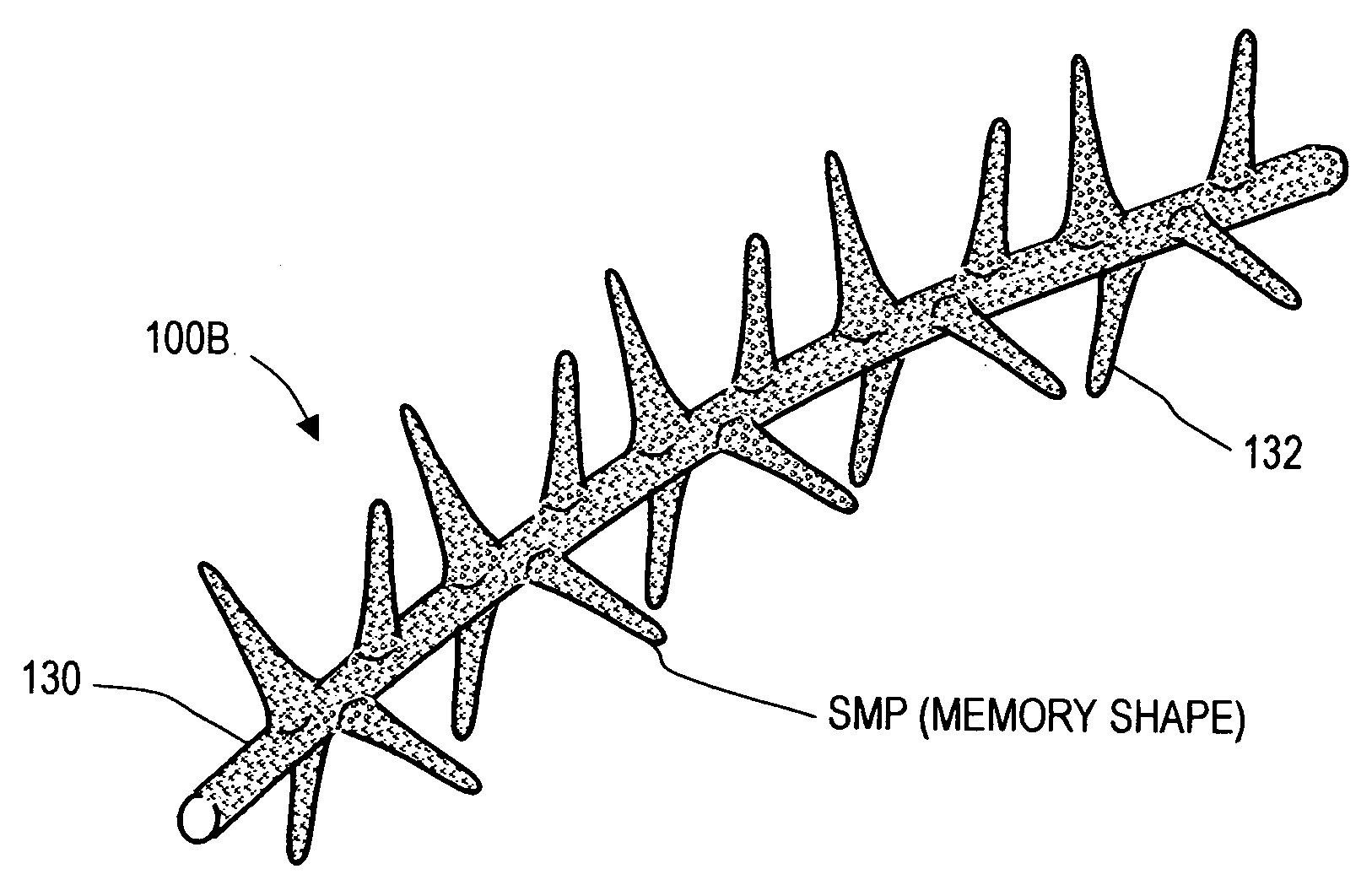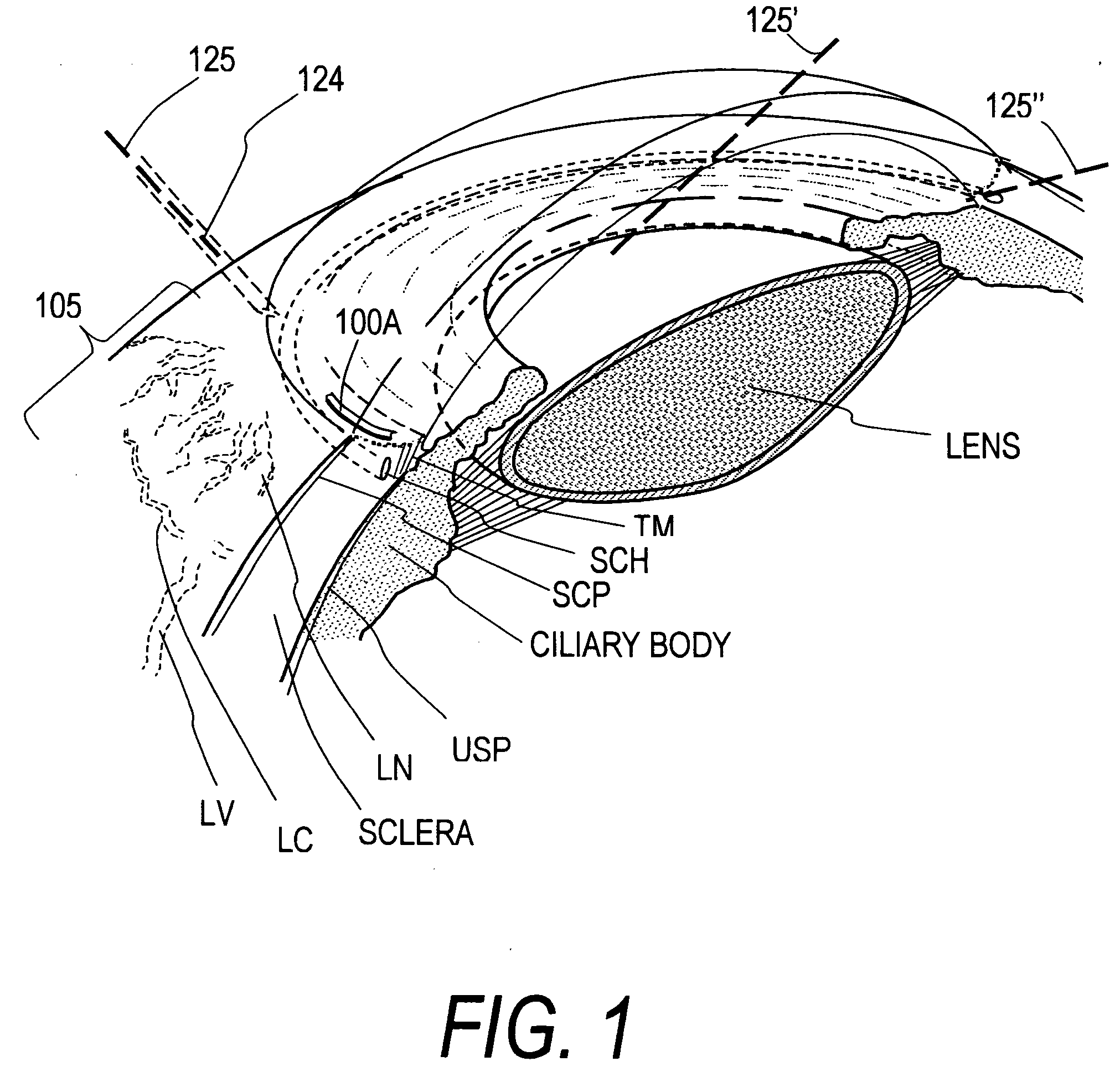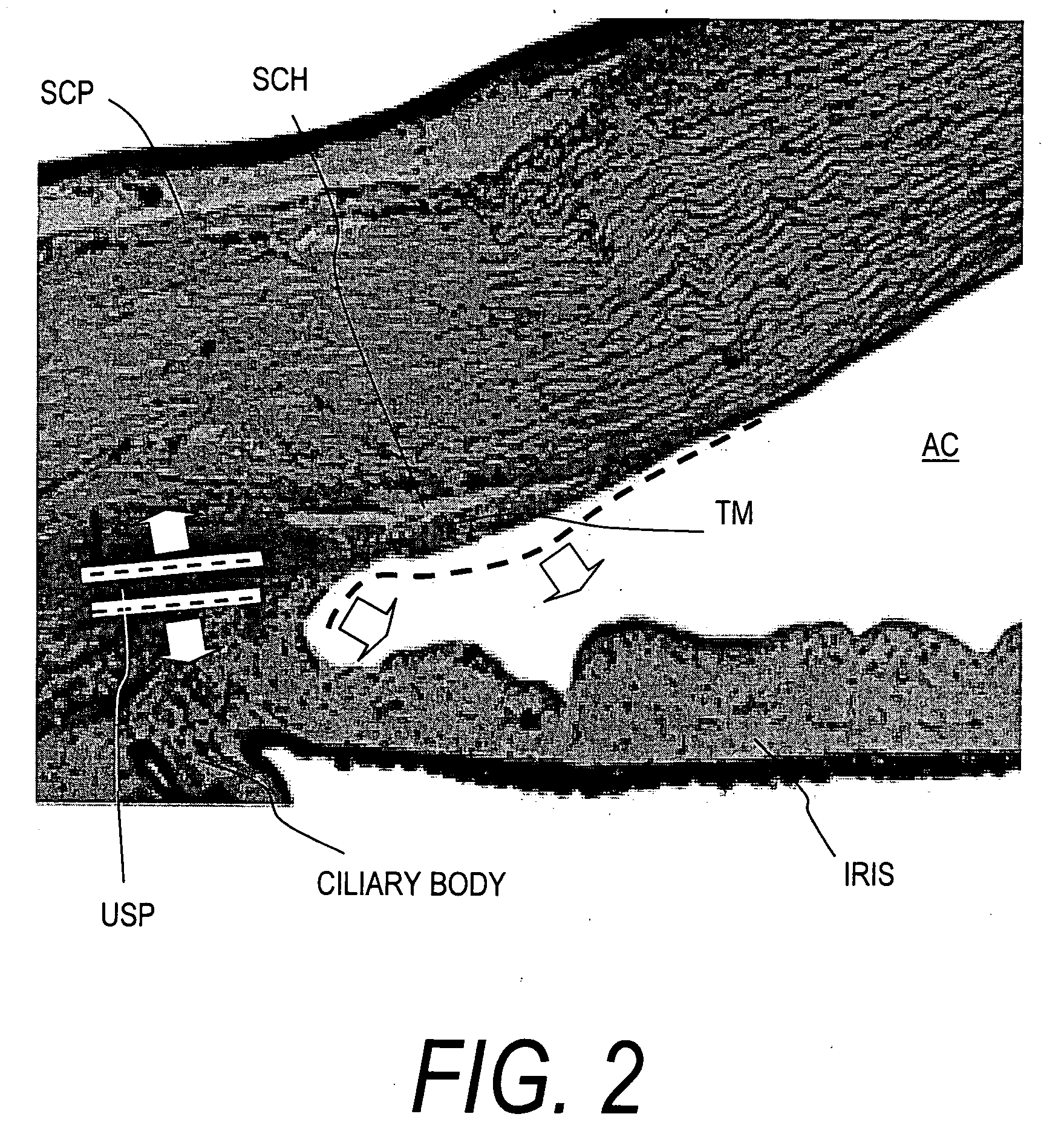Implants for treating ocular hypertension, methods of use and methods of fabrication
a technology for ocular hypertension and implants, which is applied in the field of ocular hypertension stents or implant bodies, can solve the problems of invasive surgery, no commercially available shunts and outflow devices, and progressive eye damag
- Summary
- Abstract
- Description
- Claims
- Application Information
AI Technical Summary
Problems solved by technology
Method used
Image
Examples
Embodiment Construction
[0040] 1. Type "A" implant for modifying tissue properties, geometry and permeability. FIG. 1 illustrates the anterior segment of a patient's eye wherein aqueous humor exits the anterior chamber AC in outflow pathways through the trabecular meshwork TM overlying Schlemm's canal SCH and through the uveoscleral plane USP. In general, the apparatus and method of the invention relate to stents or implants for the "retraction" of tissue in or about the aqueous outflow pathways proximate to the angle of the anterior chamber AC to enhance fluid outflows. By the term "retraction", it is meant herein that the implant applies retracting forces to cause a change in geometry in targeted tissues that will enhance outflows therethrough by increasing porosity, expanding open spaces, increasing fluid permeability, expanding outflow channel cross-sections and the like. As will be described below, the stent has dual functionality in that it applies forces to cause such tissue retraction, and also can...
PUM
 Login to View More
Login to View More Abstract
Description
Claims
Application Information
 Login to View More
Login to View More - R&D
- Intellectual Property
- Life Sciences
- Materials
- Tech Scout
- Unparalleled Data Quality
- Higher Quality Content
- 60% Fewer Hallucinations
Browse by: Latest US Patents, China's latest patents, Technical Efficacy Thesaurus, Application Domain, Technology Topic, Popular Technical Reports.
© 2025 PatSnap. All rights reserved.Legal|Privacy policy|Modern Slavery Act Transparency Statement|Sitemap|About US| Contact US: help@patsnap.com



